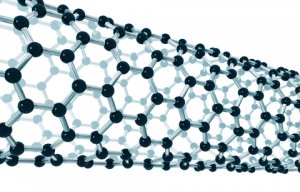
Innovation leads to new generation of nanotextiles
Vicki Barbur, VP Research and Development, M-Segment, at Cardinal Health will be presenting ‘Materials in Medicine: The Need for Smart, High Performance Textiles ‘at Smart Fabrics 2012. Organisers IntertechPira asked Vicki to share some of her insights on the industry, specifically in terms of medical applications for smart fabrics.

6th February 2012
Innovation in Textiles
|
Dublin, OH
 Vicki Barbur, VP Research and Development, M-Segment, at Cardinal Health will be presenting ‘Materials in Medicine: The Need for Smart, High Performance Textiles ‘at Smart Fabrics 2012. Organisers IntertechPira asked Vicki to share some of her insights on the industry, specifically in terms of medical applications for smart fabrics.
Vicki Barbur, VP Research and Development, M-Segment, at Cardinal Health will be presenting ‘Materials in Medicine: The Need for Smart, High Performance Textiles ‘at Smart Fabrics 2012. Organisers IntertechPira asked Vicki to share some of her insights on the industry, specifically in terms of medical applications for smart fabrics.
What are the opportunities and challenges in the use of smart fabrics in the medical arena?
Smart fabrics are ideally suited for a range of applications in the medical and healthcare arenas. However, in our business, which is focused primarily on disposable products, in particular protective apparel for the patient and clinician, the overwhelming challenge associated with the use of smart fabrics is not the features that they can deliver, but typically the price of these materials. Healthcare markets are needless to say, extremely cost conscious, and so Cardinal Health's main thrust is to provide cost-effective, high-quality products and solutions.
Where do you think the technologies have the potential for development, and where would they be needed most?
One of the overarching challenges in healthcare is to minimize the spread of infections. It is easy to use an antimicrobial coating of one form or another, yet being able to show conclusively that a smart fabric, or smart surface can unequivocally reduce the frequency of infection in a hospital setting, would be an enormous barrier to conquer. It is fairly easy and straightforward to demonstrate reduced colonization in a laboratory environment, yet there conditions are well controlled. We need to know that smart fabrics or surfaces, wherever they are, and under a variety of conditions, which might experience repeat insults in the real world, are not contributing to the spread of infections.
In your opinion, how would the perfect protective apparel look like?
The perfect protective apparel has to provide all the necessary barrier elements when it comes to potentially hazardous materials or liquids or viral penetration, as well as being able to withstand, for example, the stress and strain of an OR environment in terms of strength and overall toughness. Yet at the same time as providing the ultimate protection, even to the point of being impervious, they have to deliver ultimate comfort, and fit too, for the wearer. These features go a long way to ensuring performance is maximized is terms of utilizing one's capabilities in an unrestricted and an unimpeded way - very similar to the critical apparel used in various sports, say skiing or swimming - it maximizes the effectiveness of the wearer to achieve the highest possible speeds!
What are you looking forward to hearing at Smart Fabrics 2012?
I am looking forward to participating in this year's Smart Fabrics Conference in Miami and hearing what the textile developers can deliver in terms of new advanced materials for clinician and patient protective apparel along the three key vectors: maximizing comfort, maximizing performance, whilst minimizing cost!
Source: Smart Fabrics

Business intelligence for the fibre, textiles and apparel industries: technologies, innovations, markets, investments, trade policy, sourcing, strategy...
Find out more